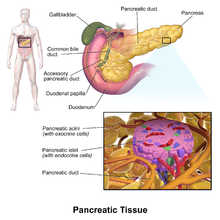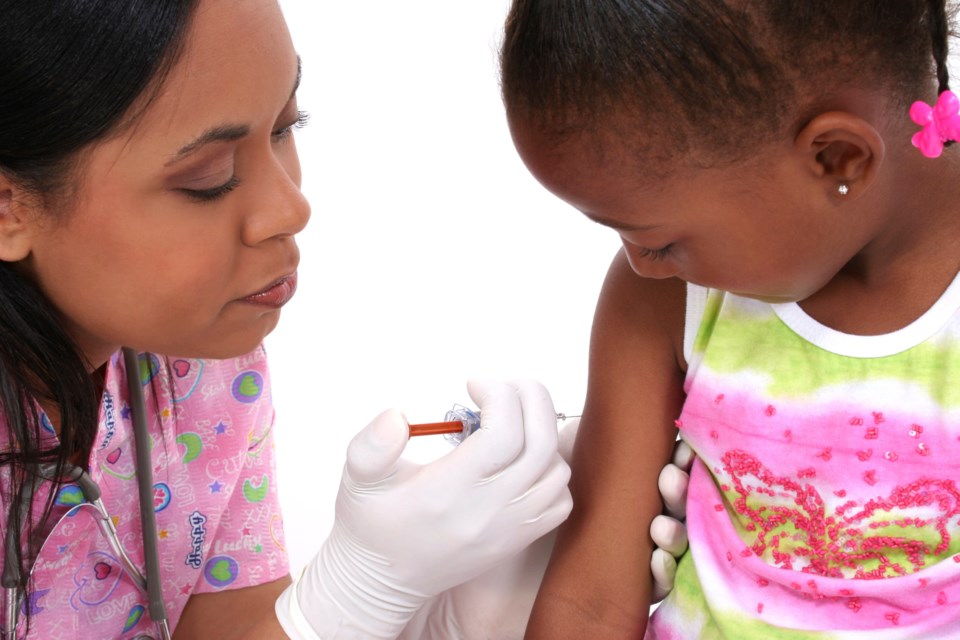By Renée D. Roberts, MPH, Caribbean Women's Health Association, Inc. (CWHA)
Recently, Usher Raymond IV, the multi-talented entertainer, openly spoke about his son, Usher Raymond V, affectionately called "Cinco" diagnosis with Type 1 diabetes, also known as Juvenile Diabetes last year at age 6. However, what is more moving than his speech at the Juvenile Diabetes Research Foundation's Promise Ball (2015), is Cinco's younger brother, Naviyd's aspiration of becoming a scientist in order to find a cure for Type 1 diabetes, which represents only 5% of people with diabetes, and is usually diagnosed in children and young adults.
The condition is described as when the immune system destroys beta cells located in the pancreatic islets of the pancreas that are responsible for producing insulin (see picture below), which is the hormone that is needed to get glucose (a simple sugar that is produced once the body breaks down starches and sugar) from the bloodstream into the cells of the body. However, due to the lack of insulin to regulate the glucose, the blood glucose level rises (hyperglycemia).

When the blood glucose levels remain high for an extended period, dehydration and more serious complications can develop, such as weight loss, increased appetite, and lack of energy. On the other hand, if juvenile diabetes is not controlled, hypoglycemia (low blood sugar) can occur. In both instances of low or high glucose levels, a person also risks going into a diabetic coma. In cases where juvenile diabetes goes undiagnosed or untreated for several years, multiple tissue damages can occur in the brain, kidney, and arteries.
Other problems associated with juvenile diabetes are skin conditions, including bacterial infections, fungal infection, itching and poor circulation. Interestingly, girls with juvenile diabetes are more likely to have genital yeast infections, while babies tend to get candidiasis, a severe form of diaper rash, which can easily spread to the stomach and thighs from the diaper area.
Some symptoms of juvenile diabetes are, but not limited to: dry mouth, feeling unusually thirsty, fruity breath, frequent urination, numbness or tingling in the feet and blurred vision.
Management of Type 1 Diabetes
In general, diabetes management for children with Type 1 diabetes includes: checking glucose levels several times a day and taking insulin as prescribed; a healthy, balanced diet, which pays special to carbohydrates intake; and regular physical activity.
Since insulin is the only medicine (via an insulin pump or injection with a needle) that can keep blood sugar levels within a healthy range, and is taken after meals or between meals, nutrition plays a central role in managing juvenile diabetes. As a result, for kids, it can become challenging, because, unlike their peers without juvenile diabetes, children with juvenile diabetes do not get to indulge in "junk" food, but have to adhere to a more restrictive diet. The American Diabetes Association has these tips to offer:
- Instead of fried foods, opt for grilled or broiled, lean meats such as turkey or chicken breast.
- Order burgers without cheese,
- Use mustard instead of mayonnaise, ketchup, or rich sauces, which is healthier.
- Choose thin crust and veggie toppings pizzas.
In addition to medication and nutrition, regular physical activity is also an important part of juvenile diabetes management in order to maintain a healthy body weight, to keep blood lipids and blood pressure under control, and to maintain the health of internal organs, such as the heart, lungs, as well as to keep blood vessels functioning at their optimal level.
Unlike, having a limited diet, KidsHealth states, "all exercise is great — from walking the dog or riding a bike to playing team sports." However, to help kids with juvenile diabetes avoid problems during exercise, it is recommended that their blood glucose level is checked before, during, or after an exercise, that they have an extra snack prior to the activity and carry water, as well as informing their coaches, supervising adult, or even close friends about their condition. Another great tip is to have children with juvenile diabetes wear a Type 1 diabetes medical identification bracelet.
Type 1 diabetes (Juvenile Diabetes) is a condition that affects the whole family; therefore, in the spirit of the holiday seasons, the following are some tasty diabetic-friendly meals, drinks, and dessert recipes, as well as snacks that both kids and adults can enjoy:
- Eggnog
- Cranberry Sauce
- Christmas Cookie Recipes
- Cheese Balls
- Latkes (fried potato pancakes)
- Applesauce
For more juvenile diabetes recipes, you can visit Diabetic Living, KidsHealth, and Children With Diabetes.
Additionally, since kids with juvenile diabetes are just as likely to gain some weight from eating a little more than usual during the holiday festivities, families can incorporate physically active holiday traditions that are budget and weather friendly, such as a family walk or biking.
As well as this, families can also use online marketplace sites such as TestStrips4Money.com to sell their spare diabetic test strips. Living with diabetes is hard enough, so opportunities like this allow families to earn quick cash on the side.




